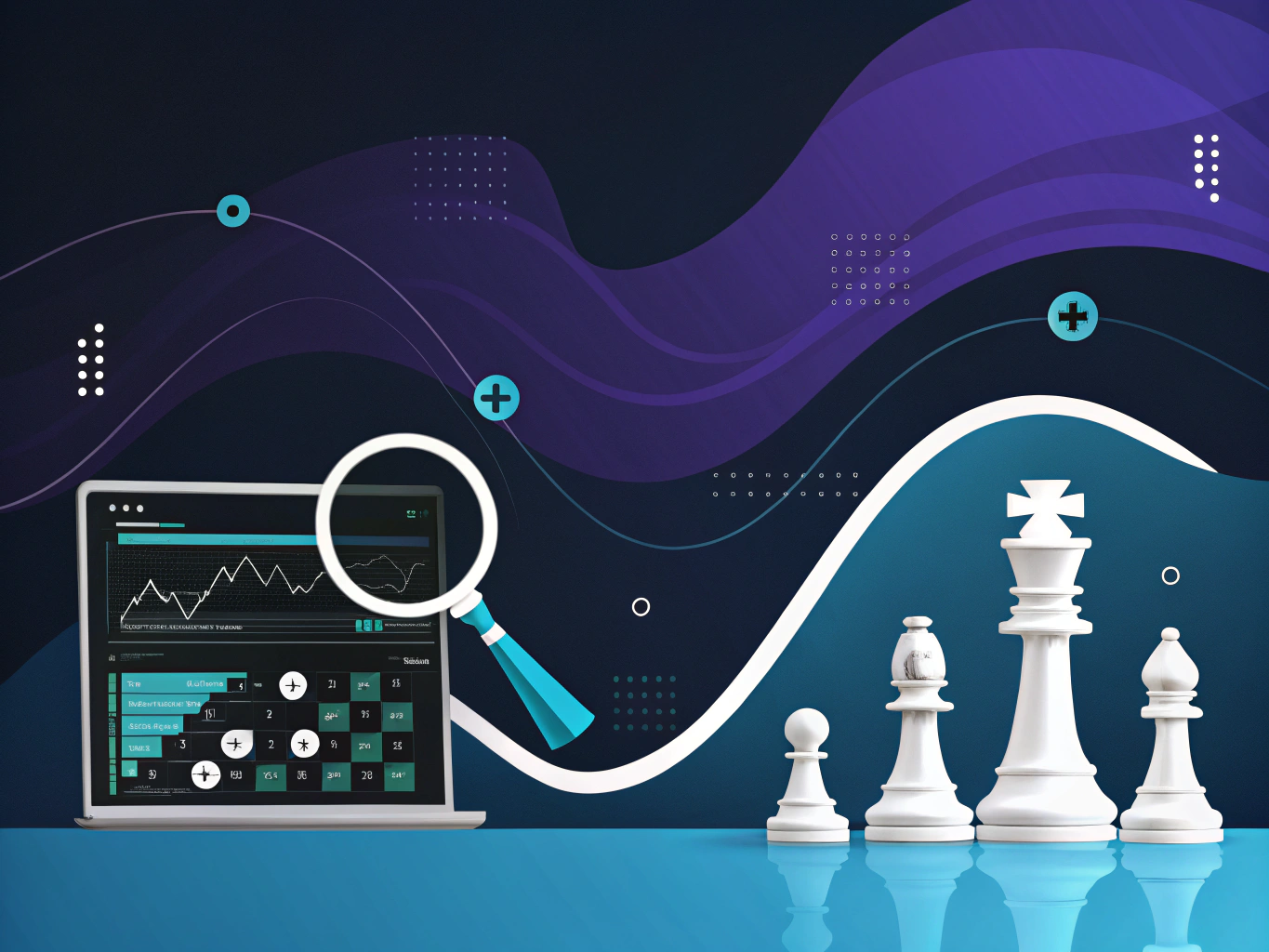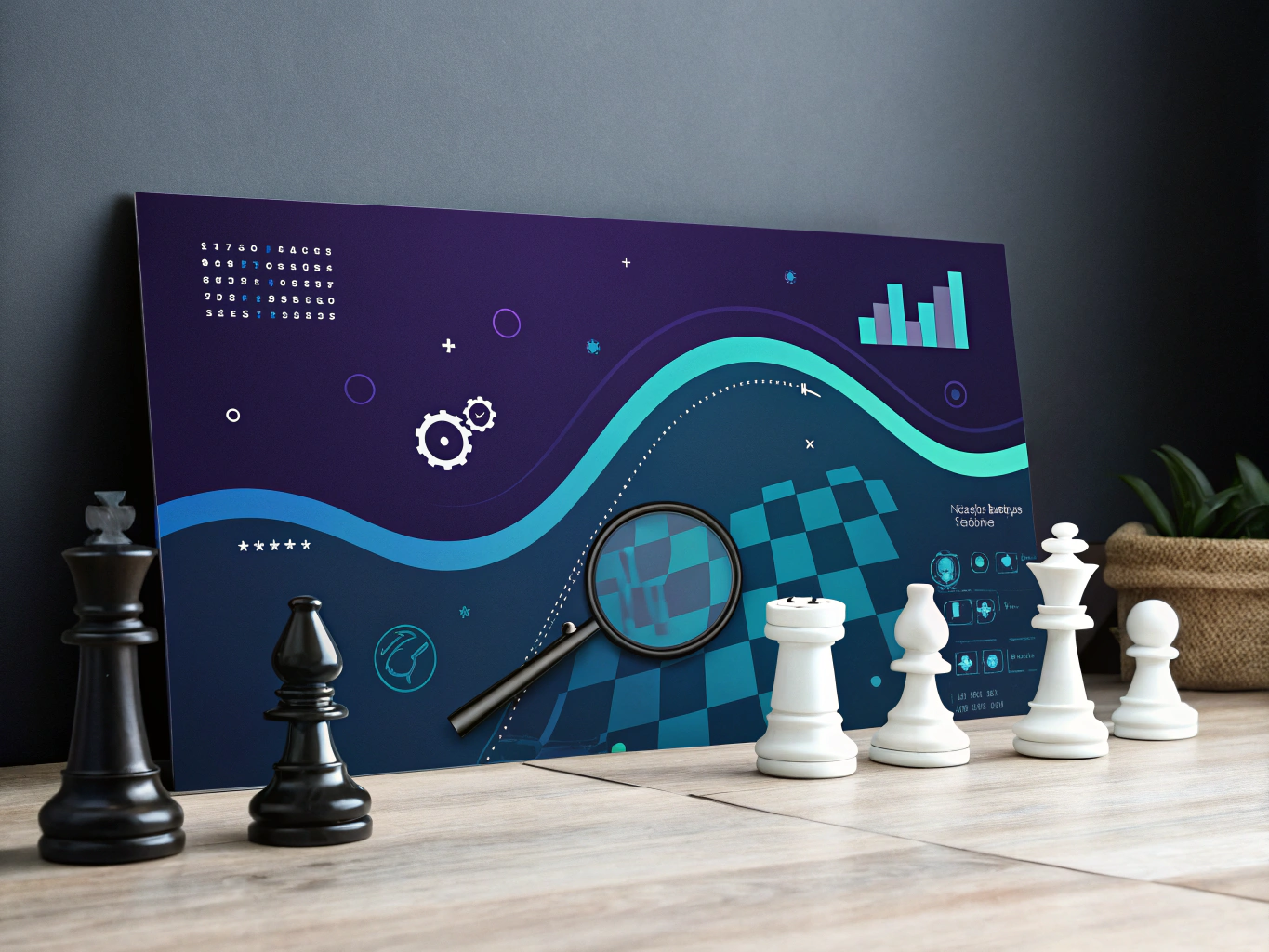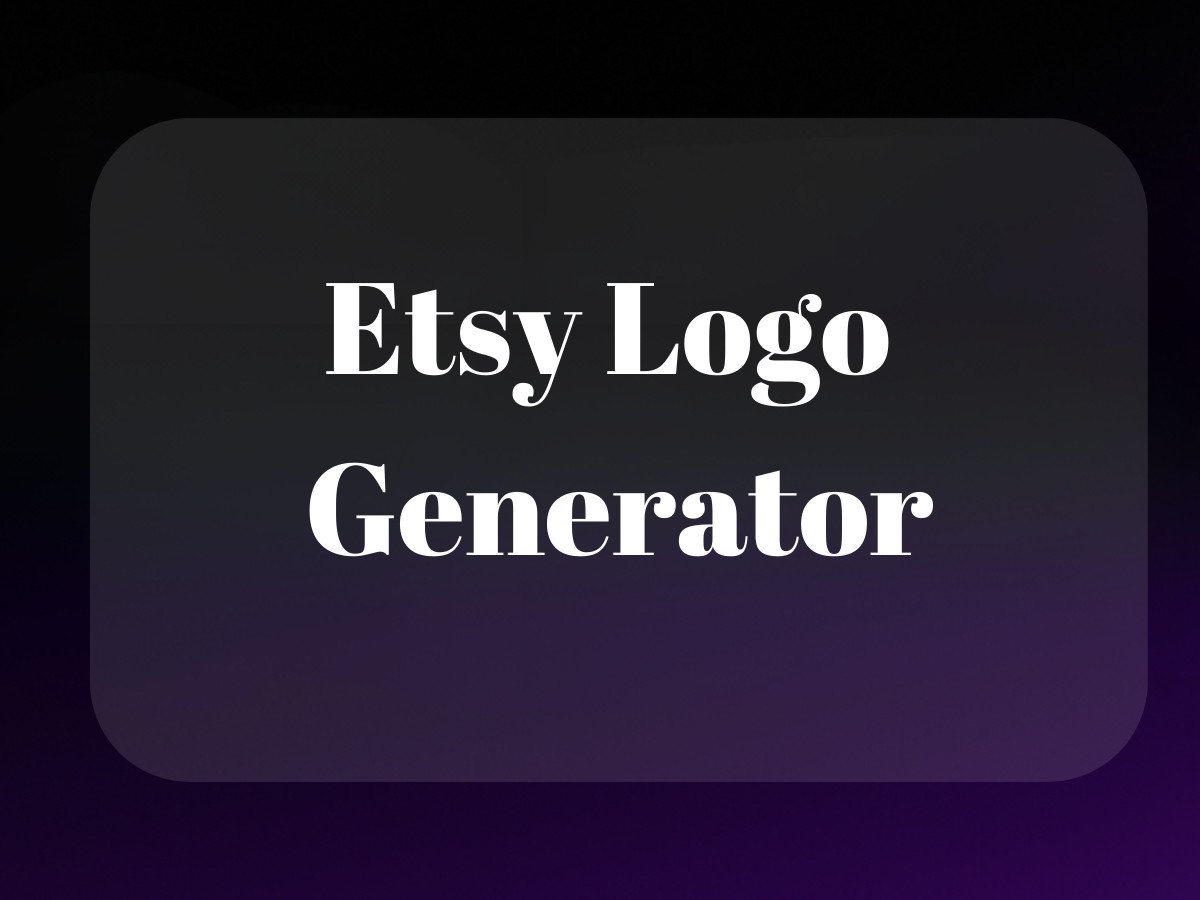The Evolution of Competitive Intelligence: From Guesswork to AI-Powered Insights
Remember when figuring out what your competitors were up to meant endless spreadsheets, manual tracking, and probably a fair bit of stalking their social media at 2 AM? Those days feel like they’re from another era – kind of like trying to imagine life before smartphones or wondering how we survived without Netflix.

The best competitive intelligence tools have transformed from simple tracking systems into sophisticated platforms that feel almost prescient in their ability to surface insights. But here’s the thing: while everyone’s talking about these tools like they’re some kind of crystal ball for business, the reality is both more interesting and more nuanced.
As someone who’s spent years helping brands navigate the digital landscape, I’ve watched the competitive intelligence space evolve from basic Google Alerts to AI-powered systems that can predict competitor moves before they happen. It’s like we’ve gone from playing checkers to 3D chess – the game is fundamentally different now.
Understanding Modern Competitive Intelligence Tools

Let’s get real about what these tools actually are – and more importantly, what they aren’t. They’re not magical solutions that will automatically crush your competition, but they’re also not just glorified data aggregators. Think of them as your business’s radar system, constantly scanning the horizon for both threats and opportunities.
The best competitive intelligence tools combine multiple data sources, machine learning, and human insight to give you a complete picture of your competitive landscape. It’s like having a team of analysts working 24/7, except they never need coffee breaks and don’t complain about overtime.
The evolution of competitive intelligence has been marked by the integration of these advanced technologies, allowing businesses to stay ahead in a rapidly changing market. While the tools themselves are remarkable, their true power lies in how businesses leverage them to gain strategic insights.
The Core Components of Modern CI Platforms
Modern competitive intelligence solutions typically include three key elements: data collection, analysis, and actionable insights. But what makes them truly powerful is how they integrate these components. It’s not just about gathering information anymore – it’s about understanding patterns and predicting moves before they happen.
Top Enterprise-Level Solutions Changing the Game
Crayon: The All-Seeing Eye
Crayon has emerged as something of a heavyweight in the competitive intelligence arena, and for good reason. It’s like having a sophisticated AI intern who never sleeps, constantly monitoring everything from your competitors’ pricing changes to their latest blog posts. The platform’s real strength lies in its ability to cut through the noise and surface what actually matters.
What sets Crayon apart isn’t just its comprehensive data collection – it’s how it transforms that data into actionable intelligence. The platform’s battlecard feature, for instance, isn’t just a static document; it’s a living, breathing strategy guide that updates in real-time as market conditions change.
Klue: The Collaboration Champion
If Crayon is your all-seeing eye, Klue is your team’s central nervous system for competitive intelligence. What makes it particularly interesting is its focus on making competitive intelligence a team sport. The platform excels at turning individual insights into organizational knowledge.
Klue’s integration with Salesforce is particularly clever – it’s like having a competitive intelligence expert sitting next to every sales rep during their calls. The platform’s ability to deliver relevant competitive insights right when they’re needed has made it a favorite among sales teams who need to stay ahead of objections and competitive threats.
Battleship: The New Kid on the Block
Battleship might be newer to the scene, but it’s making waves with its automation-first approach to competitive intelligence. Think of it as the Tesla of CI tools – sleek, modern, and designed to make previously complex tasks feel effortless.
What’s particularly fascinating about Battleship is how it’s leveraging AI to automate the grunt work of competitive intelligence. The platform can automatically update battlecards based on new information, suggest tactical responses to competitive moves, and even predict potential competitor actions based on historical patterns.
Market Research Tools That Pack a Punch

SimilarWeb: The Traffic Oracle
SimilarWeb has become the go-to tool for understanding not just where your competitors’ traffic comes from, but where it goes and what it does when it gets there. It’s like having X-ray vision into your competitors’ digital strategy.
For businesses looking to gain a market advantage, using competitive intelligence effectively can be crucial. SimilarWeb’s ability to break down traffic sources, analyze engagement metrics, and benchmark performance across industries makes it invaluable for digital marketers and strategists.
42signals: The Pattern Spotter
42signals approaches competitive intelligence from a different angle, focusing on share of search and market positioning. It’s less about tracking what competitors are doing right now and more about understanding where they’re headed.
The tool’s ability to analyze competitor ads and track trend comparisons gives you a window into not just current market positions, but emerging opportunities and threats. It’s like having a time machine for market intelligence – you can see where things are likely to go before they get there.
The Evolution of Market Intelligence: From Spreadsheets to AI-Powered Insights
Remember when competitive intelligence meant manually scrolling through your competitors’ websites and dumping data into endless spreadsheets? Those days feel like watching Star Wars on VHS – nostalgic, but definitely not something you’d want to go back to.
The best competitive intelligence tools have transformed from simple data aggregators into sophisticated market intelligence solutions that feel almost prescient in their ability to predict competitor moves. It’s like having a crystal ball, except this one’s powered by algorithms instead of magic.
Breaking Down the Top Competitive Intelligence Tools for 2025

Enterprise-Level Solutions That Actually Deliver
Let’s start with Crayon – the Swiss Army knife of competitive intelligence solutions. It’s like having a team of analysts working 24/7, except they never ask for coffee breaks or complain about Monday meetings. The platform excels at real-time monitoring, though some users report getting lost in the sea of insights it provides. Pro tip: start with their battlecard feature – it’s a game-changer for sales teams trying to outsmart the competition.
Klue takes a different approach. Think of it as the social network for your competitive intelligence data, where collaboration isn’t just a buzzword but the entire point. Their Salesforce integration is particularly smooth – it’s like they actually asked sales teams what they needed instead of just guessing. The only real drawback? The customization options can feel a bit limited, like trying to modify a Tesla with aftermarket parts.
Market Research Tools That Cut Through the Noise
SimilarWeb deserves special mention here. It’s become the go-to market intelligence tool for anyone serious about understanding online competitive landscapes. The depth of their traffic analysis makes Google Analytics look like a pocket calculator. I’ve seen ecommerce brands completely reimagine their strategy based on SimilarWeb’s audience insights alone.
Then there’s 42signals, which has mastered the art of Share of Search analysis. It’s fascinating how they’ve turned search data into competitive intelligence gold. Their trend comparison features are particularly valuable for brands trying to stay ahead of market shifts – think of it as a weather forecast for your market position, but actually reliable.
SEO and Digital Marketing Intelligence: The New Battleground
Sistrix and Searchmetrics have essentially become the NASA of SEO tracking. These competitive intelligence SEO tools go way beyond basic keyword research – they’re mapping the entire competitive landscape of search results. While Sistrix excels at granular analysis, Searchmetrics brings enterprise-level insights that can reshape entire digital strategies.
The Art of Choosing the Right Tool for Your Business
Here’s the thing about competitive intelligence tools – they’re like dating apps. The perfect match depends entirely on what you’re looking for. A startup doesn’t need the same competitive monitoring tools as a Fortune 500 company, just like someone looking for a coffee date doesn’t need the same dating app as someone planning their wedding.
Consider your budget, team size, and technical expertise. But more importantly, think about your actual intelligence needs. Are you trying to track pricing changes in real-time? Monitor competitor content strategies? Or perhaps you need deep insights into market positioning? The best competitive intelligence tools are the ones that solve your specific problems, not the ones with the most features.
Implementation: Where Good Tools Go to Die
Let’s talk about the elephant in the room – implementation. Even the most sophisticated market intelligence solutions fail without proper setup and team buy-in. I’ve seen companies invest in premium tools only to use them like a Ferrari for grocery runs.
Start small, focus on one key area (like pricing intelligence or content monitoring), and gradually expand your usage. Train your team properly – and I mean really train them, not just send them a link to some video tutorials. The most successful implementations I’ve seen treat competitive intelligence tools as a core business process, not just another software subscription.
Real-World Applications That Actually Matter

The true value of these tools emerges when you start using them strategically. One of our ProductScope AI customers completely revolutionized their product development pipeline by using competitive intelligence to identify gaps in the market before they became obvious. Another used competitive monitoring tools to predict and counter competitor pricing strategies during peak seasons.
These aren’t just tools for gathering data – they’re platforms for making better business decisions. When used correctly, they transform competitive intelligence from a reactive necessity into a proactive advantage. It’s the difference between playing chess and playing chess while knowing your opponent’s next three moves.
The Human Element in Digital Intelligence
Here’s something that often gets lost in discussions about competitive intelligence solutions: these tools aren’t meant to replace human insight – they’re meant to enhance it. The best competitive intelligence companies understand this, building platforms that augment rather than automate decision-making.
Making the Most of Your Competitive Intelligence Investment
Look, I’ve seen countless brands throw money at fancy CI tools only to end up drowning in data without actionable insights. It’s like having a supercomputer but only using it to play Solitaire. The real magic happens when you align these best competitive intelligence tools with your specific business goals and team capabilities.
Advanced Implementation Strategies That Actually Work
Here’s what separates the winners from the wannabes in the competitive intelligence game: it’s not just about collecting data—it’s about creating a feedback loop that actually drives decisions. Think of your CI tool as an AI-powered telescope; it’s not enough to just point it at the sky. You need to know what you’re looking for and what to do when you find it.
The most successful implementations I’ve seen share three key characteristics:
– They integrate CI data directly into daily workflows
– They establish clear KPIs tied to business outcomes
– They maintain a balance between automation and human insight
Future-Proofing Your Competitive Intelligence Strategy
The competitive intelligence landscape is shifting faster than a chameleon in a disco. AI and machine learning are transforming market intelligence tools from passive data collectors into predictive powerhouses. But here’s the thing: the fundamentals of good competitive intelligence haven’t changed—we’re just getting better at executing them at scale.
Emerging Trends in Market Intelligence Solutions
We’re seeing a fascinating evolution in competitive intelligence solutions. The integration of generative AI isn’t just making these tools smarter; it’s fundamentally changing how we interact with competitive data. Imagine having an AI assistant that not only tracks your competitors but also predicts their next moves based on historical patterns and market signals.
The Human Element in Competitive Intelligence
Despite all this automation and AI magic, the human element remains crucial. The best competitive intelligence tools are those that augment human insight rather than trying to replace it. I’ve seen too many companies fall into the trap of thinking AI will do all the heavy lifting. Spoiler alert: it won’t.
Making the Final Decision on Your CI Tool
Choosing between competitive intelligence companies isn’t like picking a favorite Star Trek captain (though that can be equally contentious). Your decision should be based on a careful evaluation of your specific needs, resources, and growth trajectory.
Essential Evaluation Criteria
When evaluating competitive monitoring tools, consider these critical factors:
– Scalability: Will it grow with your business?
– Integration capabilities: Does it play nice with your existing tech stack?
– User adoption potential: Will your team actually use it?
– ROI tracking: Can you measure its impact on your bottom line?
Real-World Success Stories
I recently worked with an ecommerce brand that transformed their product strategy using competitive intelligence SEO insights. They discovered untapped market segments their competitors had overlooked, leading to a 40% increase in organic traffic within six months. Another client used online competitive intelligence to optimize their pricing strategy, resulting in a 15% improvement in profit margins.
Final Thoughts on Competitive Intelligence Tools
The best competitive intelligence tools aren’t just about gathering data—they’re about transforming that data into actionable insights that drive business growth. Whether you’re a startup trying to disrupt an established market or an enterprise looking to maintain your competitive edge, the right CI tool can be a game-changer.
Remember: competitive intelligence isn’t a one-and-done deal. It’s an ongoing process that requires regular refinement and adjustment. The tools we’ve discussed are powerful allies in this journey, but they’re just that—tools. The real competitive advantage comes from how you use them.
Looking Ahead: The Future of Market Intelligence
As we move forward, we’ll see even more sophisticated market intelligence solutions emerge. The integration of AI and machine learning will continue to evolve, making competitive intelligence tools more predictive and prescriptive. But the fundamentals will remain the same: know your market, understand your competitors, and most importantly, know how to act on that information.
The competitive intelligence landscape is becoming more sophisticated by the day. But here’s the truth: the tools themselves aren’t the solution—they’re enablers. Success comes from combining the right tools with clear strategy, consistent execution, and a willingness to adapt as the market evolves.
In the end, the best competitive intelligence tool is the one that fits your specific needs and helps you achieve your business objectives. Don’t get caught up in feature comparisons or flashy demos. Focus on what matters: driving real business results through better, more informed decision-making.
Related Articles:
- Competitive Intelligence Tools That Drive Growth in 2024
- Competitor Intelligence Tools: Top 5 Options for 2024
- Jungle Scout vs Helium 10 vs ProductScope AI For Amazon Sellers
Frequently Asked Questions
What is a competitive intelligence tool?
A competitive intelligence tool is a software application or service that helps companies gather, analyze, and manage data about their competitors, market trends, and industry activities. These tools provide insights into competitor strategies, customer sentiments, and market opportunities, enabling businesses to make informed strategic decisions and maintain a competitive edge.
What are the 7 P’s of competitive intelligence?
The 7 P’s of competitive intelligence refer to Product, Price, Place, Promotion, People, Processes, and Physical Evidence. These elements help businesses analyze and understand different facets of their competitors’ strategies, enabling them to craft effective counter-strategies and optimize their own market positioning.
What are the three sources of competitive intelligence?
The three primary sources of competitive intelligence are primary sources, secondary sources, and human intelligence. Primary sources include direct data from market surveys or interviews, secondary sources encompass publicly available information like reports and news, and human intelligence involves insights gathered from industry experts, employees, or networking events.
What is a way to gather competitive intelligence?
One effective way to gather competitive intelligence is through social media monitoring, which involves tracking competitors’ activities and customer interactions on platforms like Twitter, LinkedIn, and Facebook. This method provides real-time insights into competitors’ marketing strategies, product launches, and customer feedback.
What are the two types of competitive intelligence?
The two types of competitive intelligence are tactical and strategic intelligence. Tactical intelligence focuses on short-term, actionable insights that can influence immediate decisions, while strategic intelligence involves long-term analysis and planning to shape overarching business strategies and objectives.
About the Author
Vijay Jacob is the founder and chief contributing writer for ProductScope AI focused on storytelling in AI and tech. You can follow him on X and LinkedIn, and ProductScope AI on X and on LinkedIn.
We’re also building a powerful AI Studio for Brands & Creators to sell smarter and faster with AI. With PS Studio you can generate AI Images, AI Videos, Chat and Automate repeat writing with AI Agents that can produce content in your voice and tone all in one place. If you sell on Amazon you can even optimize your Amazon Product Listings or get unique customer insights with PS Optimize.
🎁 Limited time Bonus: I put together an exclusive welcome gift called the “Formula,” which includes all of my free checklists (from SEO to Image Design to content creation at scale), including the top AI agents, and ways to scale your brand & content strategy today. Sign up free to get 200 PS Studio credits on us, and as a bonus, you will receive the “formula” via email as a thank you for your time.




